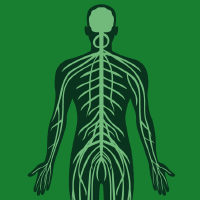Topic Menu
► Topic MenuNovel Diagnostic and Therapeutic Strategies in Gliomas
Topic Information
Dear Colleagues,
Gliomas are common aggressive primary brain tumors in adults. Most of them are highly resistant to any therapeutic intervention. Surgical resection, even gross total, which consists in the removal of all visible tumor, is rarely curative because of its infiltrative nature and presence of microscopic tumor even several centimeters away of the imaged tumor. Radiotherapy and chemotherapies also have a palliative role in their management. It is imperative that new diagnostic and therapeutic strategies are devised for their effective management. Such possible therapies may include agents that attack predominantly tumor-specific metabolic pathways, tumor cell receptors, or any other certain characteristic of tumor cells. However, employment of such specific therapies in gliomas may not be enough in clinic if each one is used alone, even if they seem to possess high-activity in vitro or in animal models. The reasons for this are multiple, including the presence of the blood–brain barrier that allows only small and lipid-soluble molecules to enter the brain and the infiltrative and diffuse nature of gliomas. One other, not very well addressed characteristic of gliomas, especially in the most aggressive glioblastomas, is the presence within the same tumor of malignant cells with different genetic abnormalities from their neighbor cells due to different genetic clones. Thus, even if there is one such effective treatment against one or two clones in the tumor that can effectively eradicate these cells, it may only allow the predominance and growth of the other existing, most aggressive, and genetically different clones. For effective therapy, prior to any treatment, surgery or biopsy and detailed characterization of the glioma clones within the tumor should be performed. Consequently, radiotherapy may be used except if therapeutic agents have been developed addressing the abovementioned different glioma clones, which may be given either simultaneously or sequentially. For all these reasons, including the fact that effective therapy for glioma may only come with multimodality treatment, we decided to compile a series of papers that will explore various novel diagnostic and therapeutic methods that may be used for eventual treatment of these highly malignant and therapy-evading tumors. Because various potentially therapeutic methods and drugs will be explored, this thematic collection will encompass several scientific journals, aiming to maximize the influence of the collection through interdisciplinary approaches.
Prof. Dr. Athanassios P. Kyritsis
Dr. George Alexiou
Topic Editors
Keywords
- glioma
- genetic abnormality
- diagnosis
- surgery
- radiotherapy
- molecular therapy
- biological therapy
- chemotherapy
Participating Journals
| Journal Name | Impact Factor | CiteScore | Launched Year | First Decision (median) | APC |
|---|---|---|---|---|---|

Biomedicines
|
4.7 | 3.7 | 2013 | 15.4 Days | CHF 2600 |

Cancers
|
5.2 | 7.4 | 2009 | 17.9 Days | CHF 2900 |

Diagnostics
|
3.6 | 3.6 | 2011 | 20.7 Days | CHF 2600 |

Journal of Clinical Medicine
|
3.9 | 5.4 | 2012 | 17.9 Days | CHF 2600 |

Neurology International
|
3.0 | 2.2 | 2009 | 23.3 Days | CHF 1600 |

MDPI Topics is cooperating with Preprints.org and has built a direct connection between MDPI journals and Preprints.org. Authors are encouraged to enjoy the benefits by posting a preprint at Preprints.org prior to publication:
- Immediately share your ideas ahead of publication and establish your research priority;
- Protect your idea from being stolen with this time-stamped preprint article;
- Enhance the exposure and impact of your research;
- Receive feedback from your peers in advance;
- Have it indexed in Web of Science (Preprint Citation Index), Google Scholar, Crossref, SHARE, PrePubMed, Scilit and Europe PMC.



